Interior Design Best Of Year Awards: Pontus Table
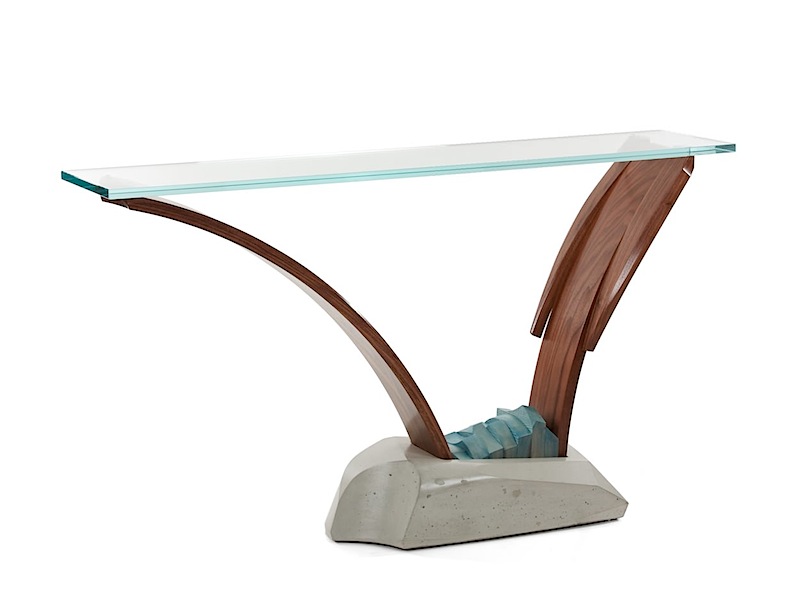
I am delighted to announce that my Pontus Console table is in the running for an Interior Design Magazine Best of Year Award. The BOY Awards honor the most innovative furniture and accessories from the past year. The competition looks quite stiff this year in my category, residential coffee & console tables. I am going to need some help to make the finals again! Every vote counts so many thanks for taking the time to vote and/or spreading the word.
Voting is open October 1-11
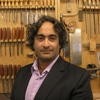 By Nico Yektai -
By Nico Yektai -New York based designer/maker Nico Yektai opened the doors to his Hamptons studio in 1995 after completing the MFA program at the School For American Craft at the Rochester Institute of Technology. The rigorous technical training complimented his background in Art History, which he studied, at Hobart College in Geneva NY. Yektai has synthesized this background into a singular style that has gained him national attention. Visit nicoyektai.com for more information
Pontus Console Table in Concrete, Wood & Glass
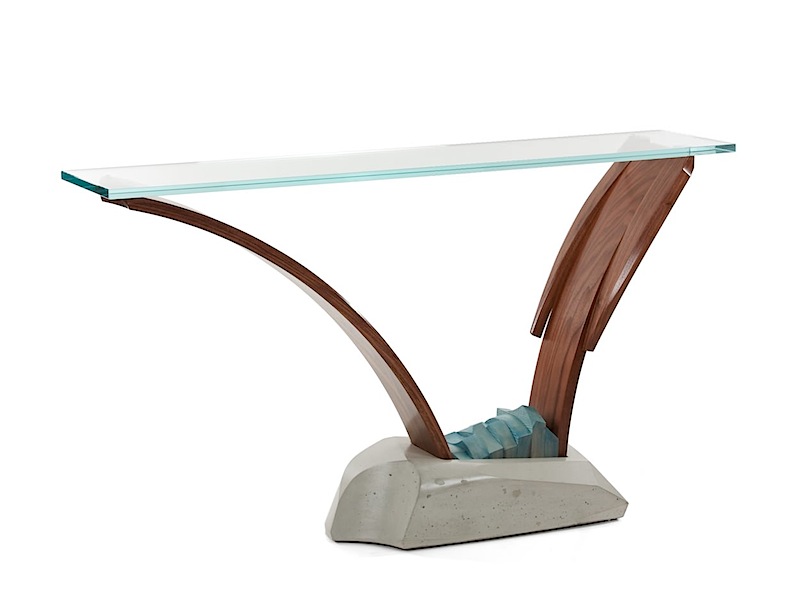
Pontus
Walnut, Colored Ash, Cast Concrete & Glass, 32H” x 56”L x 12”D Pontus on my website
The Pontus console table was born of a desire to design a console table that used an offset concrete base. I knew that I would need to incorporate bent laminations to gain the effect that I was looking for. I mocked the piece up with some curves that I had on the shelf and I quickly created and solved a major issue. The concern was the connection of the wood to the concrete base. I decided to slip the curves into the cast base.
See more on the construction of Pontus in this post Pontus Part 1
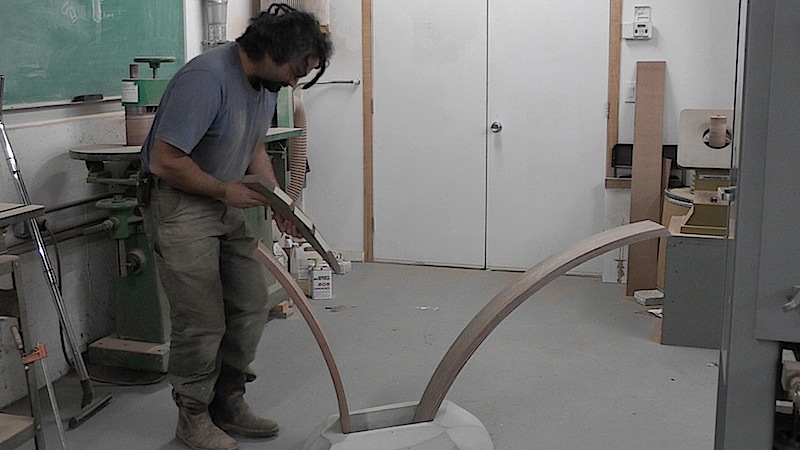
The problem was that there was an odd void at the center of the base. The solution was the introduction of the final component, the dyed ash mass. I have use this technique in the past to great effect. At its best I transform shop scrap into an integral part of the composition. I choose the color to enhance the grain of the ash and to help tie it into the color of the edge of the glass top.
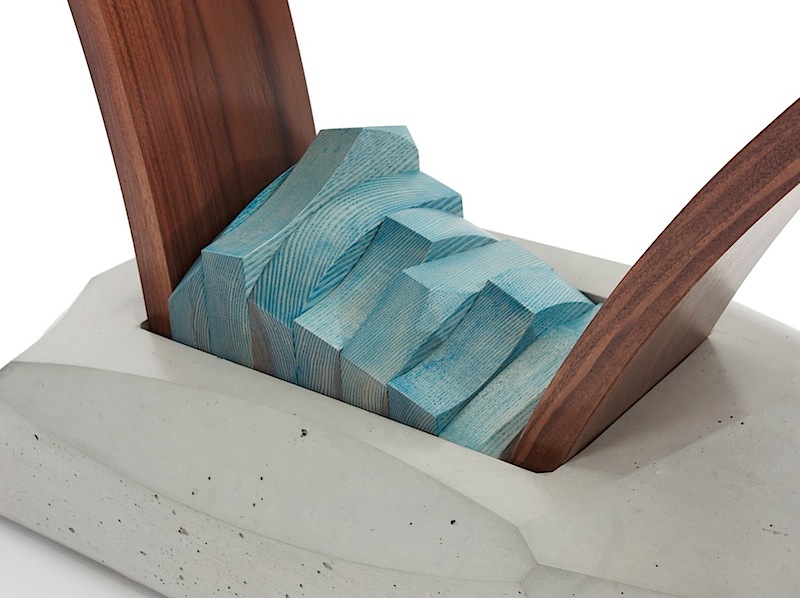
The shaping of the concrete and the wood are tied together in my unusual style. I had to use a new technique for the casting. It is a very complex casting. The resulting table is capable of being built in a variety of woods and colors which makes it one of the more versatile table I have designed. I think that this is part of the reason that it has been nominated for an Interior Design Magazine Best Of Year Award 2013.
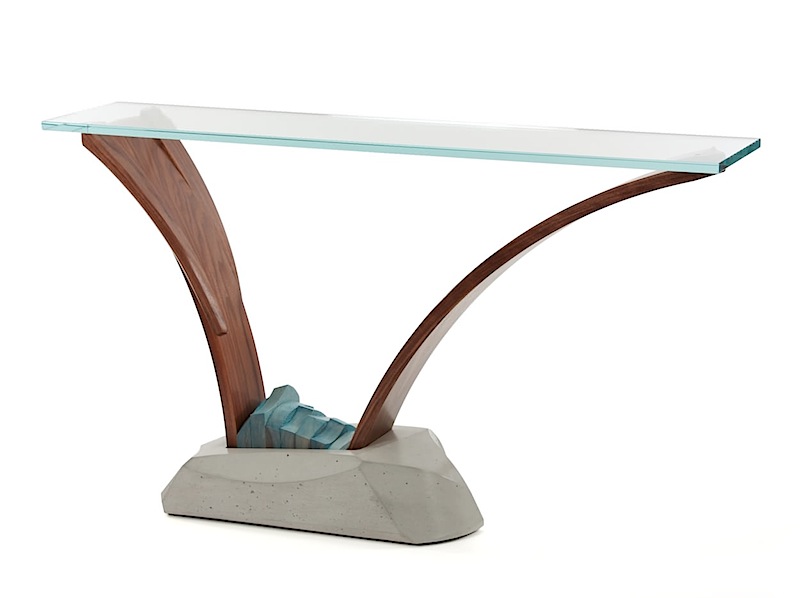
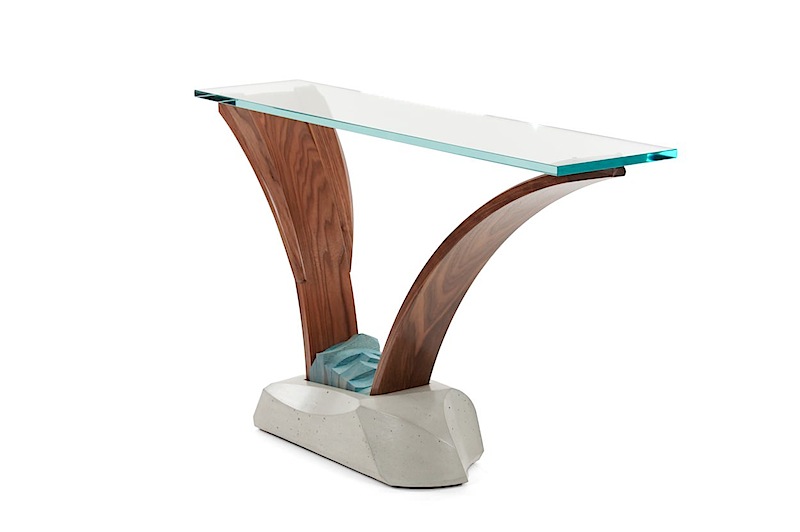
 By Nico Yektai -
By Nico Yektai -New York based designer/maker Nico Yektai opened the doors to his Hamptons studio in 1995 after completing the MFA program at the School For American Craft at the Rochester Institute of Technology. The rigorous technical training complimented his background in Art History, which he studied, at Hobart College in Geneva NY. Yektai has synthesized this background into a singular style that has gained him national attention. Visit nicoyektai.com for more information
Cito Accent Table: Wood, Concrete & Glass

The Cito accent table is designed to accompany the Pontus console table. Both tables use the same system of bent wood and cast concrete. Cito is organized around the notion of a pedestal base that is centered under the glass top. Pontus is more about the asymmetrical possibilities of an offset base. See this post for more about the Pontus Console Table. Cito uses curves with three different radii that can be paired together. The result is similar to a flower at different stages of being open. The glass top sits on these points so Cito can accommodate a wide array of shapes and sizes. I should point out the the shaping and faceting of the top of the walnut curves are different every time I make the table. These moments satisfy my intention of making one-of-a-kind pieces of furniture that display a sense of spontaneity.
Cito: Rectangular
Walnut Cast Concrete & Glass, 20.5H” x 30”L x 18.5”D More Information
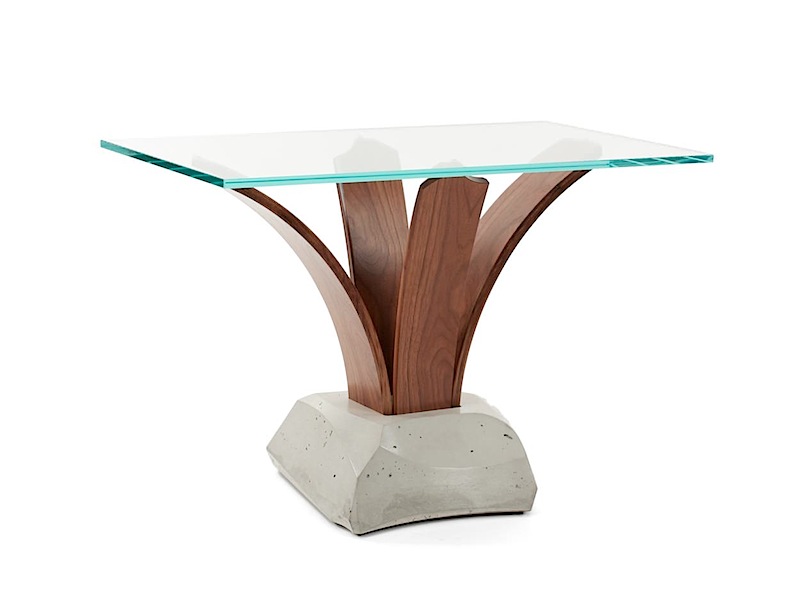
Cito: Small Rectangle
Walnut Cast Concrete & Glass, 20.5H” x 20L x 16.5”D

Cito: Circular
Walnut Cast Concrete & Glass, 20.5H” x 30”L x 30”D More Information
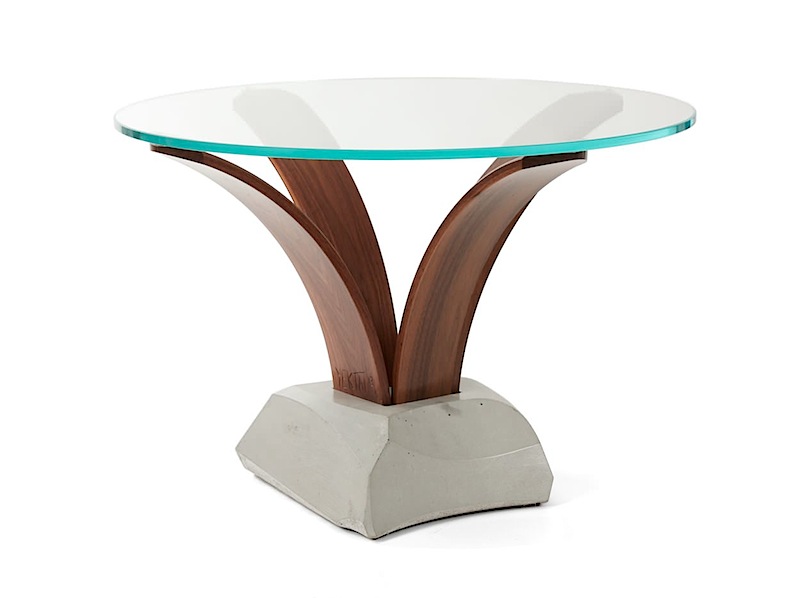
All three of the versions use the same cast concrete base. I have used a different technique this time which allows for a much more intricate casting. The overview is that I made a wood positive with all of the facets and movements that I wanted and then I made a silicone mold from it. The result is one of th most complex castings I have ever made.
For more information on the construction process of the mold and curves please see Cito & Pontus Construction post.

The four walnut curves connect at the center of the casting via hex bolts. This forced me to consider a decorative solution that would hide the hardware. These are the moments that inspire me to grow. In this case I shaped a small piece of ash with intricate facets. I then colored the ash with artists oil color to accentuate the grain. The result is an unexpected moment that reveals itself when the viewer approaches the table.

 By Nico Yektai -
By Nico Yektai -New York based designer/maker Nico Yektai opened the doors to his Hamptons studio in 1995 after completing the MFA program at the School For American Craft at the Rochester Institute of Technology. The rigorous technical training complimented his background in Art History, which he studied, at Hobart College in Geneva NY. Yektai has synthesized this background into a singular style that has gained him national attention. Visit nicoyektai.com for more information

